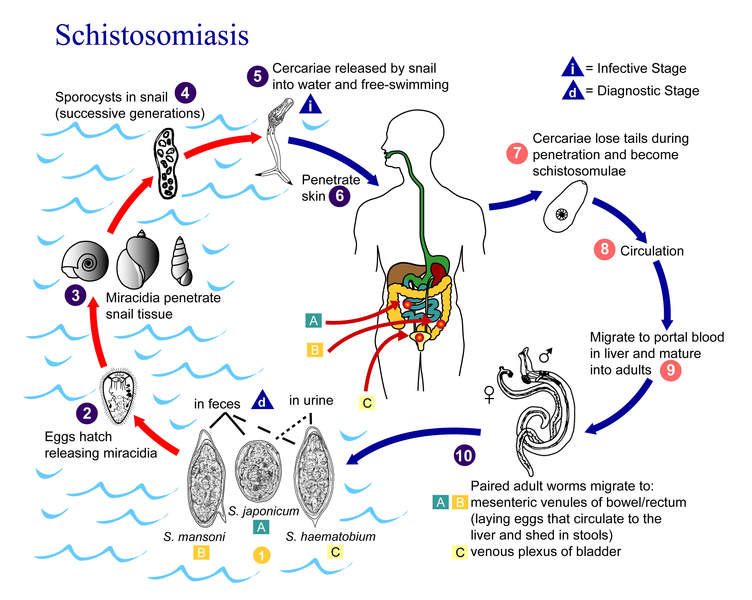Tập tin:Schistosomiasis Life Cycle.png
Giao diện

Kích thước hình xem trước: 752×600 điểm ảnh. Độ phân giải khác: 301×240 điểm ảnh | 602×480 điểm ảnh | 963×768 điểm ảnh | 1.280×1.021 điểm ảnh | 2.560×2.042 điểm ảnh | 2.936×2.342 điểm ảnh.
Tập tin gốc (2.936×2.342 điểm ảnh, kích thước tập tin: 1,94 MB, kiểu MIME: image/png)
Lịch sử tập tin
Nhấn vào ngày/giờ để xem nội dung tập tin tại thời điểm đó.
| Ngày/giờ | Hình xem trước | Kích cỡ | Thành viên | Miêu tả | |
|---|---|---|---|---|---|
| hiện tại | 21:05, ngày 21 tháng 9 năm 2010 |  | 2.936×2.342 (1,94 MB) | Leyo | {{Information |Description={{en|Eggs are eliminated with feces or urine (1). Under optimal conditions the eggs hatch and release miracidia (2), which swim and penetrate specific snail intermediate hosts (3). The stages in the snail include 2 generations o |
Trang sử dụng tập tin
Có 2 trang tại Wikipedia tiếng Việt có liên kết đến tập tin (không hiển thị trang ở các dự án khác):
Sử dụng tập tin toàn cục
Những wiki sau đang sử dụng tập tin này:
- Trang sử dụng tại ar.wikipedia.org
- Trang sử dụng tại arz.wikipedia.org
- Trang sử dụng tại ceb.wikipedia.org
- Trang sử dụng tại cs.wikipedia.org
- Trang sử dụng tại de.wikibooks.org
- Trang sử dụng tại en.wikipedia.org
- Trang sử dụng tại es.wikipedia.org
- Trang sử dụng tại fr.wikipedia.org
- Trang sử dụng tại hu.wikipedia.org
- Trang sử dụng tại hu.wikibooks.org
- Trang sử dụng tại ml.wikipedia.org
- Trang sử dụng tại nl.wikipedia.org
- Trang sử dụng tại pl.wikipedia.org
- Trang sử dụng tại sv.wikipedia.org
- Trang sử dụng tại uz.wikipedia.org


